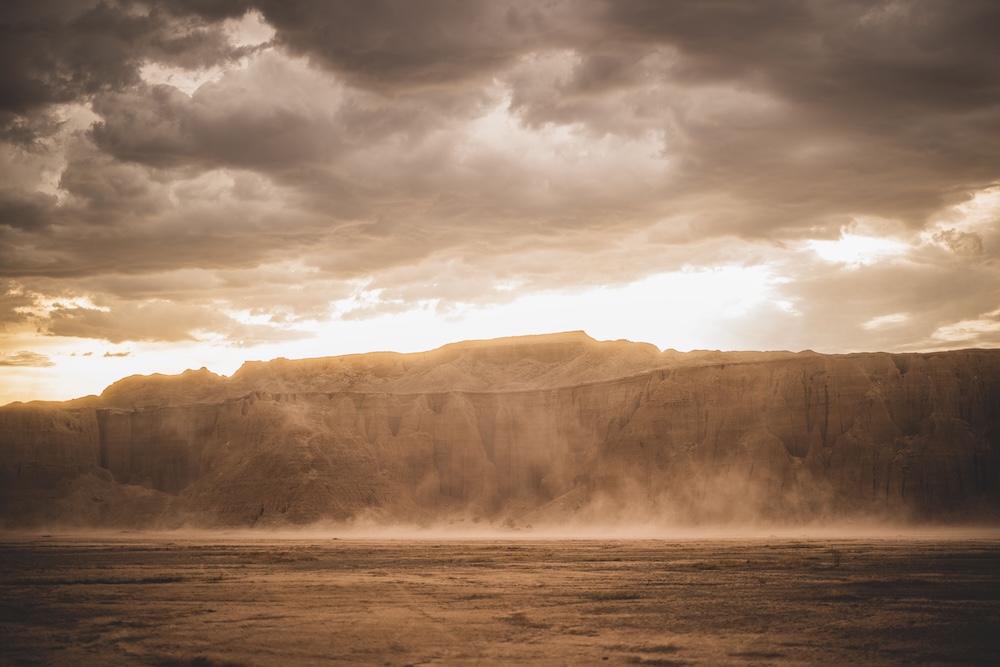When the land loses its cover, the sky takes it. In regions where drought and deforestation strip vegetation away, the earth’s protective skin is gone. All that remains is loose, unanchored soil — and when strong winds arrive, they don’t just move it, they transform it into massive, choking walls of dust. These are dust storms: spectacular, destructive, and increasingly linked to human activity.
What Is a Dust Storm?
A dust storm is a meteorological event where strong, turbulent winds lift large amounts of dust and fine soil particles into the atmosphere, reducing visibility and often traveling for hundreds or even thousands of kilometers. While they can occur naturally in arid and semi-arid regions, human-driven land degradation makes them far more frequent and intense.
How Drought and Deforestation Set the Stage
- Prolonged drought dries out soils, kills plants, and weakens root systems that normally anchor the ground.
- Deforestation removes the canopy and undergrowth that protect the soil from wind erosion. Without plant cover, the topsoil is exposed to the full force of the wind.
- Overgrazing and poor farming practices strip land of vegetation even faster, leaving bare earth vulnerable to disturbance.
When these conditions converge, the slightest disturbance — a passing storm front, a cold front, or strong convection winds — can trigger a dust storm.
The Mechanics of a Dust Storm
Strong winds lift fine particles from dry, loose soil into the air. The lighter the soil, the higher and farther it travels. In severe cases, dust can be lifted several kilometers into the atmosphere and carried across continents, as seen with Saharan dust crossing the Atlantic to the Americas.
Environmental and Human Impacts
- Air Quality and Health: Dust particles are small enough to penetrate deep into the lungs, aggravating asthma, bronchitis, and cardiovascular diseases.
- Soil Degradation: Each storm strips away fertile topsoil, reducing agricultural productivity and deepening the cycle of desertification.
- Water Contamination: Dust settling on rivers and reservoirs can affect water quality.
- Infrastructure Disruption: Dust storms can shut down highways, airports, and power grids.
Famous Examples
- The Dust Bowl (1930s, USA): Caused by severe drought and unsustainable farming, it remains one of the most infamous human-made environmental disasters.
- Middle East and North Africa: Increasing dust storm frequency linked to overgrazing, war-related land abandonment, and climate change.
- East Asia: “Yellow Dust” from the Gobi Desert regularly impacts air quality in China, Korea, and Japan.
Climate Change as a Force Multiplier
Warming temperatures are altering precipitation patterns, making droughts more intense and prolonged. In many regions, climate change exacerbates soil drying and increases the likelihood of vegetation loss. As deserts expand and semi-arid zones dry further, dust storm frequency and severity are expected to rise.
Strategies to Prevent and Mitigate Dust Storms
- Reforestation and Afforestation: Planting trees and restoring native vegetation stabilizes soil and reduces wind speed at ground level.
- Sustainable Agriculture: Practices like cover cropping, reduced tillage, and windbreak installation protect the soil.
- Drought-Resilient Land Management: Rotational grazing and soil moisture conservation techniques keep land productive even in dry years.
- Early Warning Systems: Meteorological tracking can give communities time to prepare, close schools, and protect vulnerable populations.
Final Thoughts
Dust storms are not just weather events — they are signals from the land that its protective cover has been stripped away. While nature can trigger them, human activity often turns them into disasters. Preventing the next great dust storm means tackling deforestation, restoring degraded land, and preparing for the hotter, drier climate that’s already arriving.









Reader Interactions